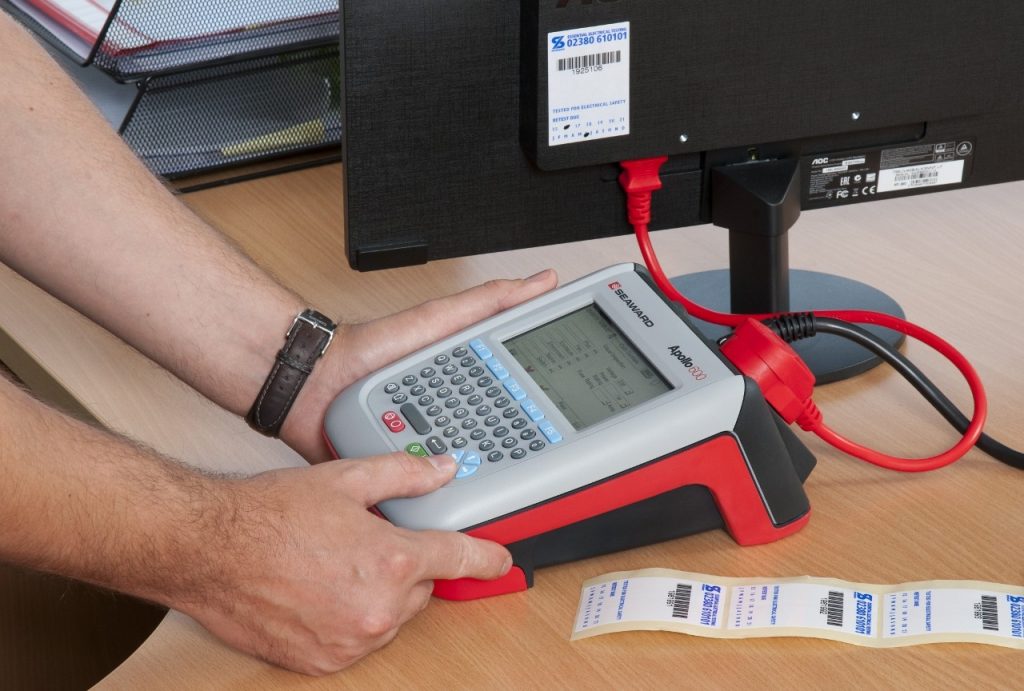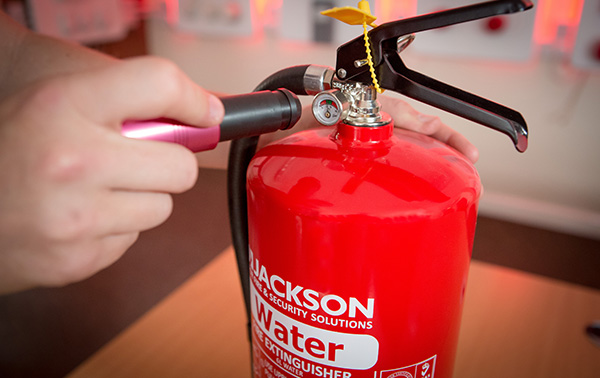Top 10 Ways For Assessing Certified Technicians For PAT in Warwickshire
The ability of the person conducting Portable Appliance Testing (PAT) is the most important factor which transforms a mechanical operation into a legally defensible safety regime. In accordance with UK laws, particularly the Electricity at Work Regulations 1989 there is no mandatory licensing scheme or legally required qualification for PAT testers. Regulation 16 says that persons are required to have "technical competence or know-how" in order to prevent injuries and harm. It is the duty holder or employer, who must decide and select the technicians. They must possess a combination between formal training and experience in the field and sound judgement. Lack of a required qualification results in a market that is characterized by varying levels of technician capability, making it essential that duty holders understand how to effectively verify competence beyond simply having an accreditation. A qualified technician is not just able to perform tests, but they also know the basic principles of safety in the electrical industry. They can interpret test results accurately and make informed decisions on passing or failing based on the IET Code of Practice.
1. The EAWR 1989 definition of competency in Warwickshire
Regulation 16 of 1989's Electricity at Work Regulations define the legal obligation. It states that persons need to be competent to avoid injury and danger. HSE defines competence as "the ability for a person to complete a task without placing themselves at risk or putting others at risk." The HSE defines competence as "the ability to carry out the task in a safe and efficient manner without putting themselves or others at risk." Technicians must have all three of these to be considered legally competent.
2. Formal qualifications vs. demonstrable competence in Warwickshire
While formal education isn't legally required, it provides the best way to demonstrate the knowledge. City & Guilds' 2377 qualification ("In service Inspection and Testing of Electrical Equipment") is the most widely recognized industry standard. This certificate is not enough to establish competency. It is also necessary to have experience in the field. A person who is required to perform duties should seek an appropriate certification as well as evidence of experience. Technicians must be able to demonstrate their skills.
3. City & Guilds qualifications 2377 are described
City & Guilds' 2377 certification is a Level 3 qualification which assesses a candidates knowledge of the IET Code of Practice, and their ability of performing inspections and testing properly. The exam is broken down into two parts – 237777 (theory multiple-choice exam) and 237778(practical assessment). The complete award shows that both the technical knowledge as well as his skills in the field have been independently evaluated. It is advisable to confirm the certification by asking for the certificate number and then confirming its validity via the City & Guilds verification portal. Certificates can be forged.
4. Practical Experience On Experience Is Required in Warwickshire
Without the ability to apply theory, it is of no use. A skilled technician needs significant hands-on experience in testing a range of appliances across different situations. They can spot problems that a novice may miss and work in a variety of environments, like construction sites and industrial facilities, and work with equipment safely. To assess the experience of a technician, a dutyholder can ask about their work experience and the types of places the test subject has worked on.
5. Knowing the IET Code of Practice is crucial for inspections in-service as well as testing
The IET Code of Practice serves as the basis of PAT exams. The Code of Practice from IET is the standard for PAT testing. Technicians who have been certified must possess a copy and be able to comprehend the contents of the. This means knowing the various equipment categories, the order of visual tests and inspections, and how to correctly utilize test instruments. The ability of their employees to apply and follow this guidance in a timely manner will be a key indication of their professionalism.
6. Calibration of Equipment and Understanding Testing Instruments
A professional technician who is knowledgeable knows that the test equipment they employ is essential for obtaining accurate results. It is essential that they be aware that the PAT test equipment has to be calibrated by an accredited UKAS laboratory regularly (typically each year) to ensure precise readings. They must have the validity of their certification for the device. In addition, they must know how to operate the device correctly, carry out a daily user check (e.g. or a lead test), and interpret the results it gives and not simply record numbers.
7. Capability to conduct meaningful inspections in Warwickshire
At least 90% of the faults can be identified by an extensive visual examination. This is a crucial step for a technician. The technician examines all connectors, plugs and cables, as well as casings looking for damage, wear signs or indications that they've overheated. The technician understands how to connect a plug and has the proper fuse rating. The tester who is less knowledgeable may be rushed or even skip the entire process and only rely on their computerized tester.
8. The ability to judge and make decisions: Interpreting Results and Applying Pass/Fail Criterion in Warwickshire
The tester's electronic sensor provides readings, while the technician makes the judgment. The level of competence is demonstrated by being able to interpret the readings in the context of the IET Code of Practice's pass/fail guidelines and the appliance itself. They must be able to determine when a reading of insulation resistance is acceptable, or when an earth continuity reading that seems to be acceptable could signal a defect in a particular type of appliance. The most valuable thing about an expert is their ability to make educated choices.
9. Insurance and Liability Issues in Warwickshire
It's not required but any technician with the right skills should ideally be covered by Public Liability Insurance. The client is covered in the event that the technician causes property damage during the testing. By engaging a technician with a proven track record the person in charge can enhance their legal defence, in proving they did everything they could to find an expert. This is important if a later investigation is conducted into an electrical incident.
10. Skills for documenting and communicating in Warwickshire
Testing that is not documented transparent and precise documents is not worth the effort. A certified technologist should produce precise, clear documents and asset registers that accurately identify every device. Test results must be documented, with a clear result should be stated. They must also possess the ability to effectively communicate with their duty holders. This involves educating them on any issues that are discovered, the associated risks, as well as the required actions. Communication is an important element of the safety procedure. Follow the most popular PAT testing in Warwickshire for website examples.

Top 10 Tips On The Compliance With The Regulatory Compliance For Fire Extinguisher Service in Warwickshire
The framework of regulation that governs maintenance of fire extinguishers in the UK is a complete system that is designed to guarantee the reliability of equipment and safety for the public through clearly defined legal obligations, technical standards, and certification programs. Fire extinguisher services are subject to specific legal requirements, unlike some safety regulations which offer broad guidelines. These are backed up by standards for technical performance and third-party certification programs and detailed reforms to the regulatory (Fire Safety) Orders, creating an established compliance process. This multi-layered plan places accountability directly on the "Responsible person" of each facility for ensuring proper maintenance and offers clear benchmarks that provide proof of due diligence. The understanding of this framework, not only to keep legal compliance, but also to ensure that the equipment for fire safety will function according to the standards required when emergency situations occur, is vital.
1. The Regulatory Reform (Fire Safety) Order 2005 (FSO) in Warwickshire
The Fire Scotland Act of 2006, and similar rules in Northern Ireland and Scotland, are the basis of the legislation on fire safety in England and Wales. Article 17 specifies that all equipment used to fight fires be "subject to a maintenance program and maintained in a state of efficiency and in good working order and in good repair." The Order places the responsibility for this on the "Responsible individual" (usually the employer or owner, or occupier of the premises). The person who is responsible for this is legally accountable to ensure that the correct servicing procedures for every piece of fire protection equipment that includes portable extinguishers are established and maintained.
2. British Standard BS 5306-3 (2017)
This standard provides a framework for the FSO and provides the necessary requirements for maintaining and commissioning portable fire extinguishers. The standard defines three distinct types of service: the basic (annual inspections by visuals and easy inspections), enhanced (discharge tests as well as internal examinations every five years for extinguishers made from water, powder, or foam) and overhaul (pressure testing and internal inspections every ten years for CO2 fire extinguishers). The law stipulates that maintenance systems comply with the BS 533-3.
3. Third-Party Certified Schemes in Warwickshire
Although it's not an official requirement, choosing a BAFE certified SP101 provider (British Assurance for Fire Equipment), offers the most reliable demonstration of due diligence. This UKAS-accredited scheme of certification independently verifies whether a company meets stringent standards for technical expertise, quality of work process, business procedures, and equipment. BAFE Certification is recognized as a strong proof to fire authorities, insurers and courts that an organization has met the FSO’s maintenance requirements.
4. Fire Risk Assessment – What's the function? in Warwickshire
Fire Risk Assessments (FRAs), which are dynamic documents help guide the fire safety decisions and include those related to extinguisher-related services. The Fire Risk Assessment (FRA) should specify the kind, size, and Warwickshire of firefighting equipment and the maintenance requirements. The FRA must be reviewed regularly particularly when the circumstances change. Any modifications must be reflected in the servicing schedule. These reviews are often aided by the reports of service providers.
5. Documentation is required and there are evidence requirements in Warwickshire
It is vital to supply complete documentation to show conformance. A complete report should be provided by the service company after every service. It should contain details about the company and details about the engineer along with the date and type of service of equipment that was serviced, recommendations made or faults found. These reports are available for inspection whenever required by law enforcement officials like Fire and Rescue Services and insurance companies. If there's not enough documentation, the authorities could take enforcement actions even if the service was completed.
6. Enforcement Mechanisms and Penalties in Warwickshire
Local Fire and Rescue Authorities perform compliance audits, and also have authority to enforce. If a required service is not met, the local authorities in charge of fire and rescue can issue: Alterations Notifications that require changes to fire security measures, Enforcement Notifications requiring improvements to be implemented within a certain timeframe or, in extreme cases, Prohibition Notes (closing down areas or imposing restrictions on them immediately) For grave violations, like those that put life at risk the courts may impose unrestricted fines or up to two-years' imprisonment.
7. Impacts of Insurance in Warwickshire
Commercial insurance policies typically need compliance with fire safety legislation as a condition of policy. In the event of the event of a fire the insurance policy could be cancelled if the company isn't in compliance or has insufficient documentation. Insurance assessors require servicing records when processing claims. Insurance companies can also request specific standards for certification, such as BAFE Sp101 as an obligation for protection, particularly in high-risk commercial premises and policies.
8. Skills for Technicians in Warwickshire
The FSO demands that maintenance be carried out only by a trained person. While not legally defined, competence generally includes: formal training on BS 5306-3, manufacturer-specific equipment training, practical experience, and understanding of relevant regulations. Through regular audits and assessments Third-party certificates such as BAFE SP101 test the competency of technicians.
9. Environmental Compliance in Warwickshire
Environmental protection legislation is responsible for disposing of extinguishers that have been decommissioned and disposed of. The Environmental Protection Act, 1990, is the main environmental law. Service providers have to be registered waste haulers and must provide Waste Transfer Notes for disposed equipment. Responsible persons should make sure that their service provider complies with the law when disposing their waste.
10. The frequency and the scope of service requirements in Warwickshire
Compliance requires adherence to the frequency of service required by BS 5306-3: basic service every year for all extinguishers extended service every five years for foam, water and powder types and overhaul every 10 years for CO2 units. Furthermore, the Responsible Person is required to ensure that regular inspections of the visual area are conducted (often assigned to staff) to check for obvious issues such as obstructions or damage, as well as pressure loss. Combining professional service along with user-specific checks makes for an efficient maintenance program. Follow the top Warwickshire fire extinguisher servicing for blog examples.

